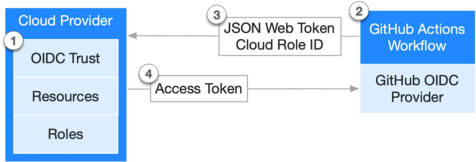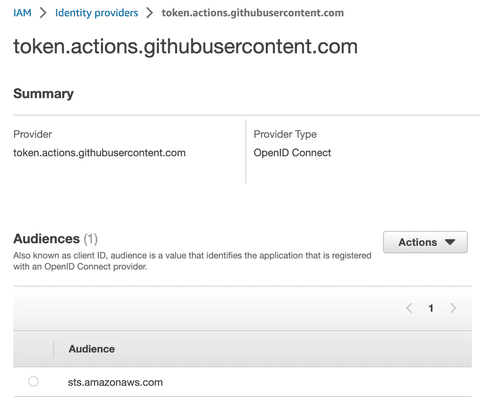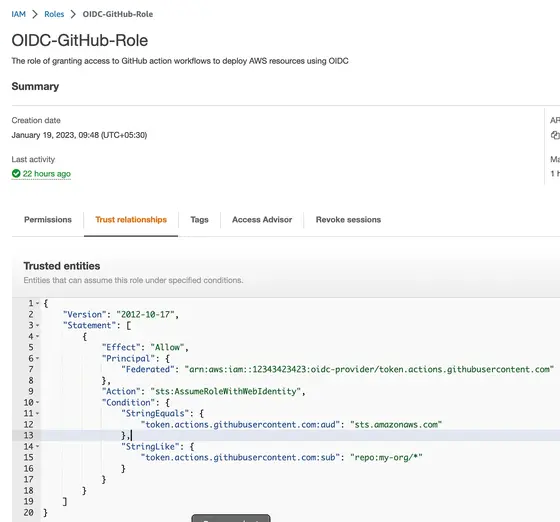


GitHub Actions is a platform to perform automated tasks upon triggering an event in GitHub. This is being used extensively to govern continuous integration and continuous delivery (CI/CD) workflows once code changes are pushed to a repository. But GitHub Actions has capabilities beyond that to automate a lot of stuff such as tagging releases, sending notifications when creating issues, repository migrations, etc.
There are several benefits to using GitHub Actions for Continuous Integration and Continuous Deployment (CI/CD):
When using GitHub Actions to deploy changes to a cloud provider, the most crucial requirement is providing only the necessary and least access to GitHub to access the cloud provider and execute the deployment successfully. This can be accomplished comfortably by using the OpenID Connect protocol to request access from the cloud provider.
This approach works principally by building a trust relationship between AWS and GitHub and granting GitHub to assume an IAM role with the necessary permissions. This can be fulfilled by defining some rules in AWS to run against the claims included in the OIDC token sent by GitHub. Below are the high-level steps of how this procedure.
"Condition":
"StringLike": {
"token.actions.githubusercontent.com:sub": "repo:octo-org/octo-repo:*"
}
}

This approach works not only with AWS but also with almost any cloud provider like Azure, Google Cloud, and platforms like Hashicorp Vault as well.
Let’s do the configurations that need to be done from AWS end first.
Add GitHub OIDC provider to IAM with the correct provider (https://token.actions.githubusercontent.com) and audience (sts.amazonaws.com)

Create an IAM role, as usual, to be assumed by GitHub with the appropriate permissions. In order to make sure that this role can be assumed only by allowed entities in GitHub, the trust relationship rules should be defined under the trust relationship section of the IAM role. All available claims that can be used to define these rules can be found here.

With the above changes, AWS is now ready to allow the created role when a valid token is received from GitHub that fulfills the defined trust relationship.
Now let’s do the changes from the GitHub end. This configure-aws-credentials action has been created by AWS to simplify this process to exchange the OIDC token for a cloud access token. The following code snippet shows a simple example workflow that copies a file to a S3 bucket upon a push event to the git repository. Notice how configure-aws-credentials action is configured with role name, role session name and the was region.
name: AWS example workflow
on:
push
env:
BUCKET_NAME : “example-bucket-name”
AWS_REGION : “us-east-1”
# permission can be added at job level or workflow level
permissions:
id-token: write # This is required for requesting the JWT
contents: read # This is required for actions/checkout
jobs:
S3PackageUpload:
runs-on: ubuntu-latest
steps:
— name: Git clone the repository
uses: actions/checkout@v3
— name: configure aws credentials
uses: aws-actions/configure-aws-credentials@v1
with:
role-to-assume: arn:aws:iam::1234567890:role/example-role
role-session-name: samplerolesession
aws-region: ${{ env.AWS_REGION }}
# Upload a file to AWS s3
— name: Copy index.html to s3
run: aws s3 cp ./index.html s3://${{ env.BUCKET_NAME }}/
Now whenever the workflow is triggered, configure-aws-credentials action will send the generated OIDC token to AWS to get the short-lived access token that grants the permission included in the requested IAM role.
In this article, we discussed how to use GitHub Actions to securely deploy your applications to AWS using OpenID Connect. You can find the below links to find more details.